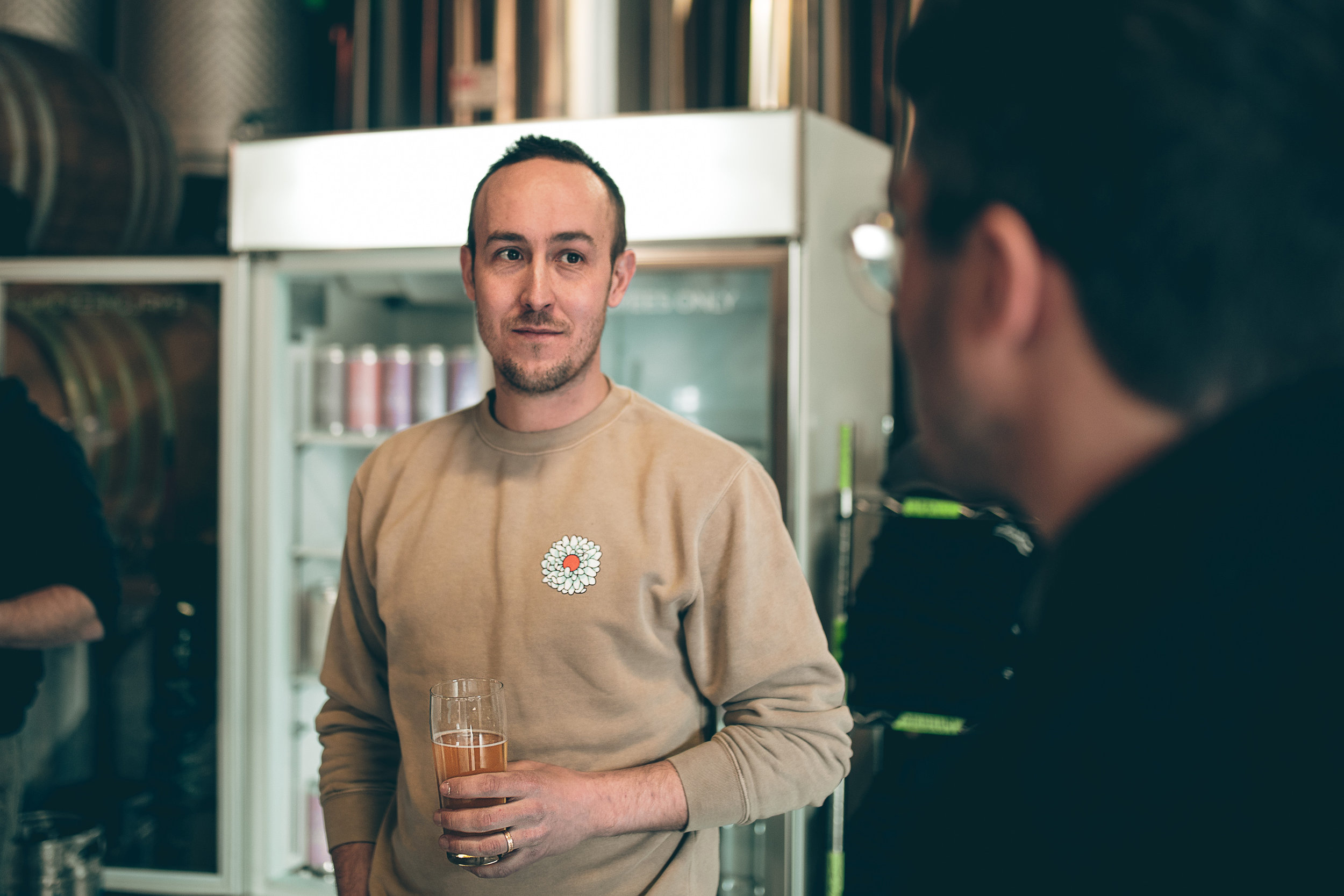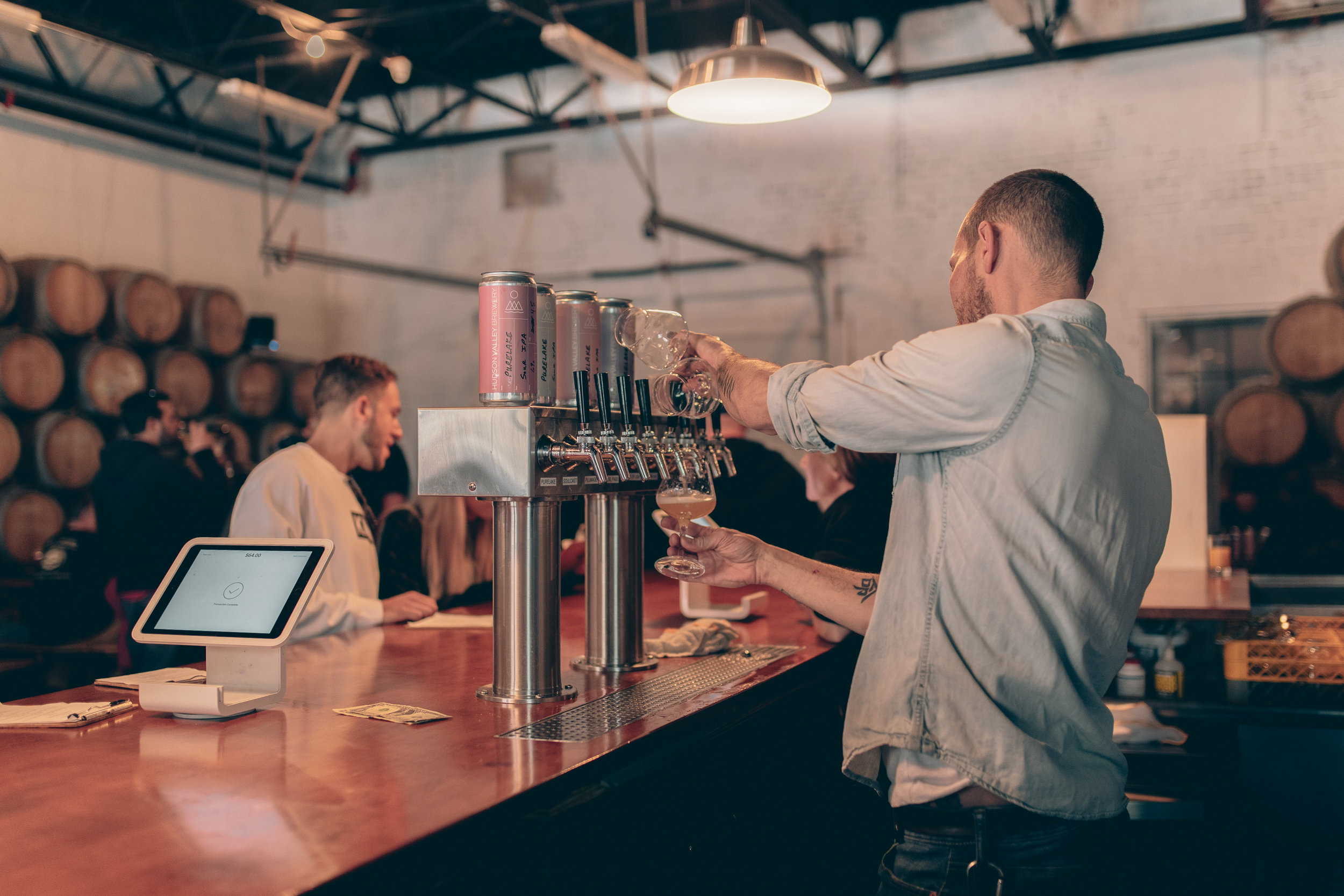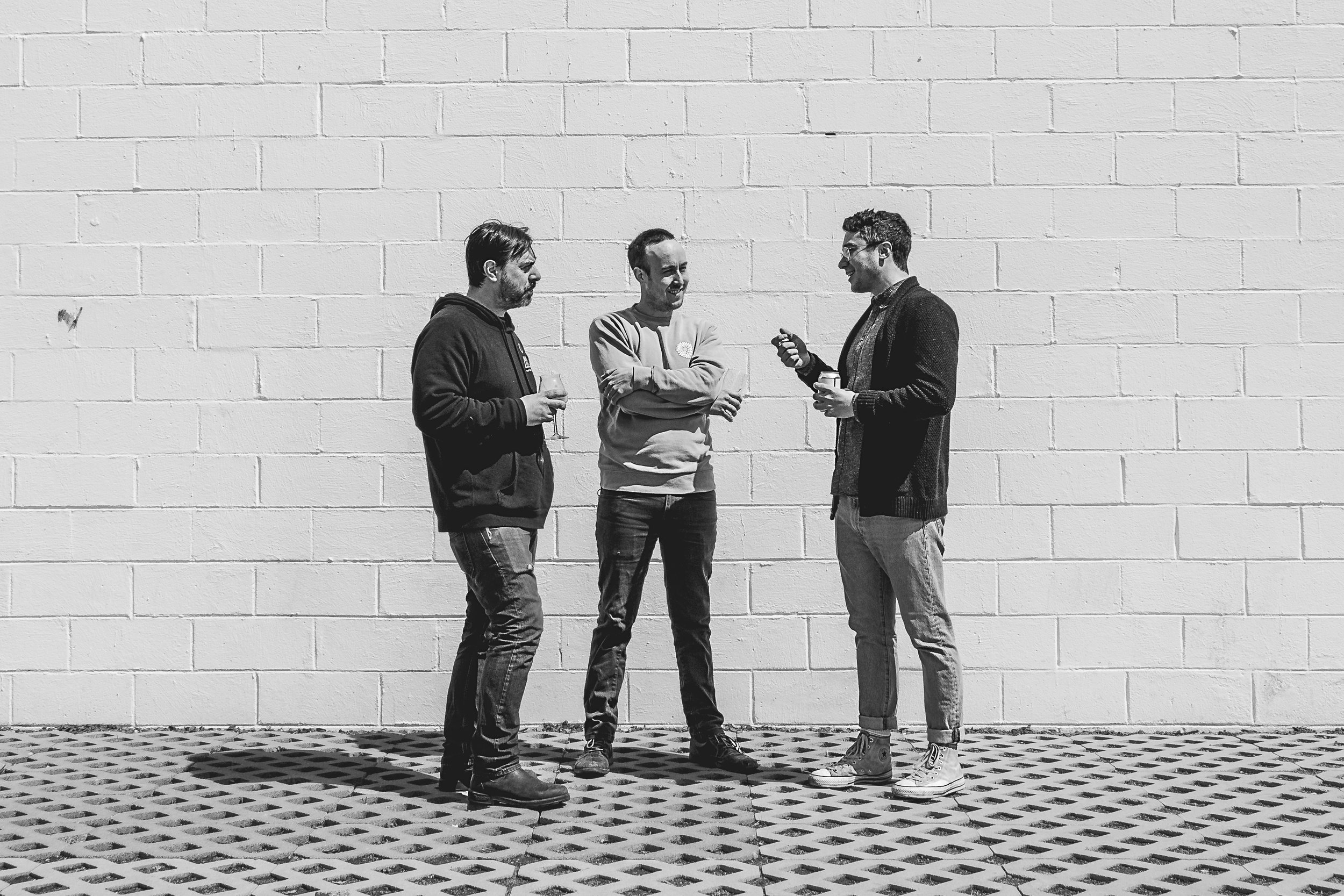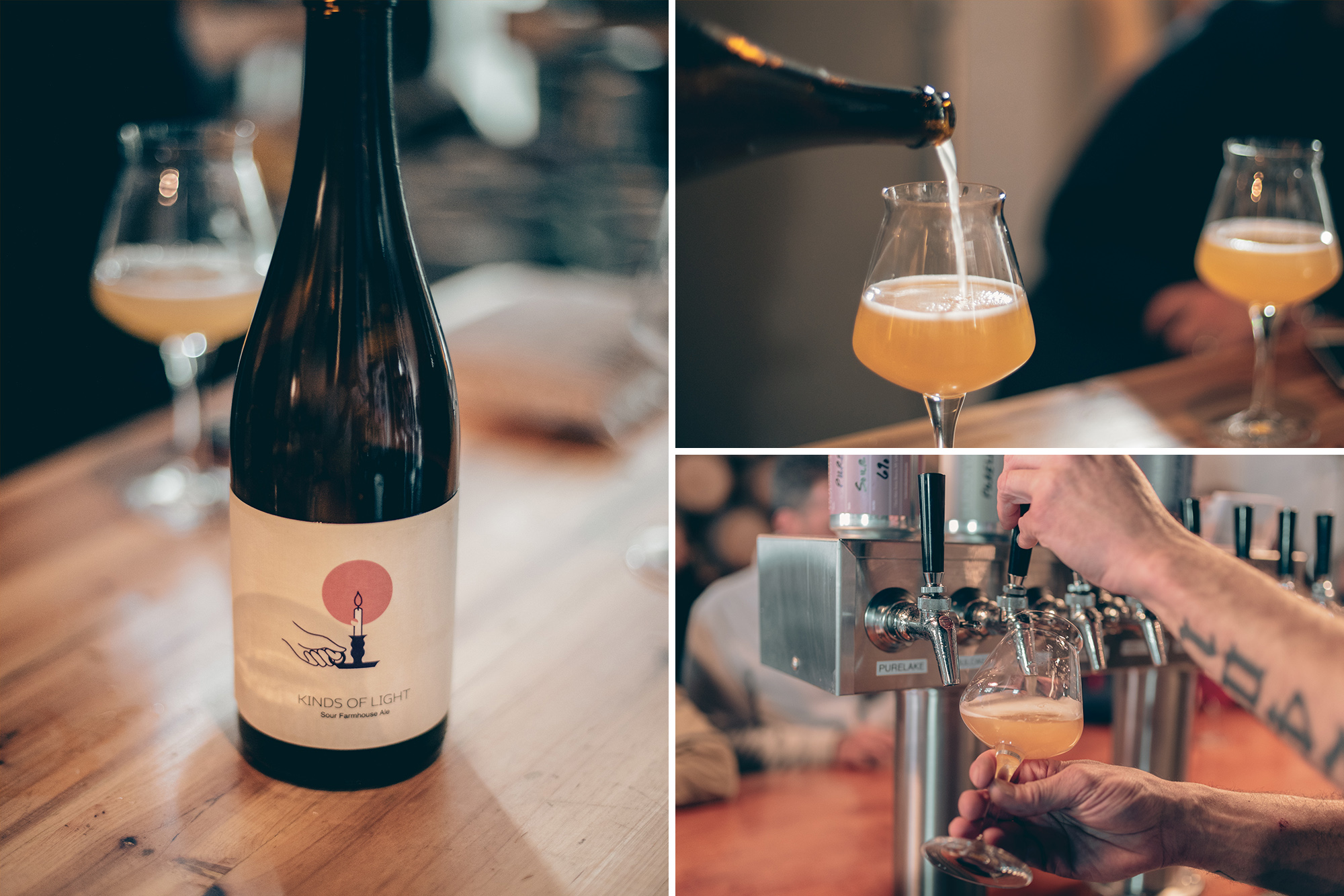New York City casts a long shadow, one that extends beyond the literal silhouettes of steel, glass, and concrete that stretch across Manhattan. Culturally, it’s imposing. Mention “New York” and few will think “State,” or call to mind the city’s northern neighbors in the Hudson Valley. New York City acts as a black hole, absorbing any notoriety that might otherwise make it beyond the boroughs’ borders.
But that shadow is slowly starting to recede—or perhaps the Hudson Valley is beginning to step out of it. It started with food. When Dan Barber opened Blue Hill at Stone Barns in 2004, the restaurant’s outsize reputation tempted even settled Manhattanites beyond city limits. Then came modern revivals of once-forgotten roadside motels like Scribner’s Catskill Lodge and The Red Rose Motel, which managed to evince nostalgic coolness without a Brooklyn zip code.
And while Captain Lawrence Brewing Company and Peekskill Brewery have called the area home for years, the Hudson Valley has recently welcomed a surge of new arrivals, from Suarez Family Brewery and Plan Bee Farm Brewery to Industrial Arts Brewing Company and Equilibrium Brewery. Lately, you could argue that the Hudson Valley’s beer scene has nearly caught up with its metropolitan neighbors.
One of the area’s newest arrivals is Hudson Valley Brewery. Though the brewery only began sending beers out in January of 2017, its origin story, and its building, pre-date that by some measure.
“I was 34 and moved back into my parents’ house,” says John-Anthony Gargiulo, the founder and president of Hudson Valley Brewery. As he speaks, his eyes shift to the Beacon-based brewery’s back wall. “I was at a real crossroads in my life, wondering if I wanted to do this for the next 15, 20 years, or did I want to hit reset. I said, ‘You know, I think I want to move home and open a garage brewery.’”
Gargiulo had been working in film in L.A., but his interest in the industry was beginning to wane. While out West, he and his friends took frequent road trips, stopping along the way at small breweries, which first put craft brewing on his radar. His professional disinterest, coupled with a desire to head back home and start fresh, led him to pack his bags and make the 3,000-mile move in 2009.
“I moved back to open the brewery,” Gargiulo continues. I spent my time looking at buildings, looking at property, and working on tailoring my business plan to the area.”
He talks of time spent working out of a rented office space in a business incubator while he toiled away on his business plan. At the same time, he was actively looking at properties that never panned out. “I did that for almost two years, taking odd jobs to have some money. In 2012, I started bartending and managing a craft beer bar in Beacon called The Hop.”
While Gargiulo navigated the complex experience of returning home as an adult, Jason Synan and Michael Renganeschi—now both co-owners and brewers at Hudson Valley—were beginning to forge a connection over music and beer.
At the time, Synan was a manager at Bacchus, a popular New Paltz-based restaurant and brewery, while Renganeschi taught American literature at Marist College. The two had initially connected over music, and played in an electronic and ambient band called Windsprints. During band practice, Renganeschi’s homebrewing became a frequent topic of discussion, and soon, the activities became intertwined: they’d kill time playing music while waiting for the water to boil.
Soon, both Synan and Renganeschi became consumed with discovering as much about beer as they could. “This is when Green Flash West Coast IPA was the hottest beer. Anchorage had just become available. I still remember having Bitter Monk for the first time,” says Synan, reflecting back on what could be described as a simpler time in craft. Following their shared homebrew sessions, the two began brewing on a small system at Bacchus.
Unlike many who start out simply hoping to produce palatable beer, Synan and Renganeschi had more profound ambitions: they aimed to make beer that was as good as what was pouring on Bacchus’ other draft lines. “We had to compete with these people out of the gate because our beer was going to be poured next to them,” says Synan.
Renganeschi adds: “We put the pressure on ourselves. We wanted people to take us seriously and evaluate it on the same level.”
Their perfectionism was warranted. “I dunno man, when your beer’s on tap next to Hill Farmstead, you need to bring it,” says Synan.
Before long, the two started sending a handful of kegs down to the city, though they weren’t exactly greeted with open arms. “I initially sent their kegs back,” says Katherine Kyle, a partner and general manager of the Blind Tiger Ale House in New York’s West Village, one of the city’s long-standing craft institutions. She’s worked tirelessly over the years to foster and maintain the Tiger’s reputation, so when kegs showed up that she didn’t order from a sour maker in New Paltz that she’d never heard of nor tried, her reaction was simply “no way am I pouring them at Blind Tiger.”
“I wanted to be up here for a lot of reasons. I wanted the opposite of what cities provide. ”
But after a personal appeal from Matt Lefkowitz of Union Beer Distributors—he told Kyle she had something special on her hands—she got the kegs back in, tried the beers, and has since continued to support the team. “Our distributor always asks if I want kegs, and I always say yes,” she says.
The importance of those first kegs is certainly not lost on Synan. “Having our beer on tap at Blind Tiger was a life-changing experience,” he says.
Making beer is one thing, but selling it is another. While transactional and unromantic, these early endeavors to get beer into the New York City market were, on reflection, pivotal to Hudson Valley Brewery’s development. “I think that was the best thing we ever did, to start selling our beer—probably prematurely—from Bacchus, because it gave us context and made us realize we were actually a brewery trying to sell beer in one of the biggest cities,” says Renganeschi.
Soon after, the paths of all three men finally crossed. While Synan and Renganeschi were toying with the idea of opening their own brewery, Gargiulo had started visiting Bacchus, his newfound refuge for craft beer back on the East Coast. Handily, “it was literally the closest beer bar to my house,” he says. During one visit, Gargiulo casually mentioned the desire to open a brewery of his own.
“I think that’s one of the first things you ever said to me,” Synan says to Gargiulo. From that moment on, the pieces began to fall into place.
Beacon is 62 miles from Midtown Manhattan, about an hour-and-a-half-long drive if traffic is on your side. A Metro-North train is probably your best option. The railroad follows the Hudson northwards, the river acting as travel partner, faithfully visible to the left. Signs emblazoned with charmingly named towns like Dobbs Ferry, Hastings-On-Hudson, and Tarrytown greet you at every stop.
But in terms of vibe and feel, that 62-mile separation might as well be 620. Beacon is quaint, cozy. Decidedly not New York City. Tree-lined streets await you as you step off the train. There’s a central Main Street, the kind you might imagine in an idealized vision of Middle America, full of tiny old buildings that now host a swath of new businesses.
It’s what Gargiulo pictured when he began thinking about opening a brewery. “I wanted to be up here for a lot of reasons. I wanted the opposite of what cities provide,” he says. It’s also true that Hudson Valley Brewery feels unlike any of the brewery spaces you’ll visit in the city. “I think the people coming up from the city like the view of the mountains and they like the open air. The city was never a consideration [for us]. If anything, I wanted it to be a little more rural.”
“I dunno man—when your beer’s on tap next to Hill Farmstead, you need to bring it.”
Picking a brewery’s location is one thing, but making it happen is another. Gargiulo had fallen in love with a building near The Hop. This was no passing infatuation: the Mill Building, a local landmark with 19th-century origins, captured his imagination. “I remember it so well, it brings tears to my eyes thinking about [it],” he says. “It was built in 1822 as part of a hat factory and textile mill right next to the railroad tracks, so it was used as storage for raw supplies and finished products going out. The hats were mostly straw hats during the 20s, and then felt hats.” Get him going, and he’ll tell you all about the former mill town’s history.
Unfortunately for Gargiulo, at the time he only had a business plan, with no money to back it up. “They just laughed at me and said no way,” he says of the real estate company representing the property. But he refused to give up. After attempting to acquire the space for three years, he was finally given keys in the beginning of 2016. Gargiulo, Synan, and Renganeschi quickly moved onto the arduous task of clearing and readying the long-dormant building. By December of that year, they were cutting in the drains.
Hudson Valley Brewery has since built a reputation that outstrips its tenure by some measure, all while taking an uncommon path. It has eschewed not only a location in New York City, but also a tap list rife with NEIPAs. Instead, Sour IPAs are what cause lines to form outside of the brewery in the wee hours on Saturday mornings.
A word on that nomenclature: “Sour IPA” is likely the most easily understood, consumer-facing language available for Hudson Valley Brewery’s unique beers—and is language that the brewery itself uses—but the term undersells what’s in the can. These beers dive headlong into adventurous, atypical flavor profiles, thanks to ingredients like hibiscus and lime purée (Fauna), vanilla beans and mango purée (Holocene), and Viognier and Petite Sirah grapes (the brewery’s Purelake series).
“It’s a product of dialogue—it’s not a linear process,” says Synan, as he reflects on how the brewery’s beers come to be. “It’s not like there’s a recipe that we create then follow. The product is never necessarily finished, and since it’s very much up for discussion, it’s a product of compromise.”
Interestingly, the two brewers have elected to apply blending techniques to what’s ordinarily a linear, straightforward brewing process, which is perhaps the most divergent aspect of their IPA production. According to Renganeschi, “Whether it’s how we build flavor or how we think about your palate, that comes from our experience blending oak-aged sour beer primarily. We were able to take that process and use it on other things.”
It’s an uncommon approach, but one that has afforded them special creative freedom. “I think a lot of breweries keep those things very separate,” Renganeschi says. “One end is artistic, one end is mechanical. We’ve been able to take some of the artistic side, the blending, and translate it through to the other beers we make here.”
“I was at a real crossroads in my life, wondering if I wanted to do this for the next 15, 20 years, or did I want to hit reset. I said, ‘You know, I think I want to move home and open a garage brewery.’ ”
Given that Hudson Valley Brewery has used ingredients like white chocolate, peppermint, and chamomile in its IPAs, it’s clear that the brewers’ influences stray far from the norm. Synan attributes this inventiveness to another, non-beer-related domain entirely.
“Certainly a lot of that comes from cocktail culture,” he says. He recounts that five to six years ago, when he and Renganeschi were still living in New Paltz, they’d make the trek down to the city to visit seminal East Village bars like Please Don’t Tell and Death & Co. At the time, Synan was reading books by David Wondrich and Jim Meehan, and recalls being enamored with the city’s thriving cocktail scene.
“What these guys were doing was insane in terms of recipe formulations. [There were] 10, sometimes 12 ingredients where, on paper, you look at it and you have no idea what it’s going to taste like,” he says. “They were so far on another level of ability and understanding that you didn’t know what you were going to get. And then you get the cocktail and it’s such a pure, undeniable expression of flavor. I think with our weirder Sour IPAs, that’s what we’re trying to do.”
While Sour IPAs do make up the bulk of the brewery’s notoriety, its portfolio also includes a range of other styles, from farmhouse ales aged in oak like Magnolia and Peregrine to straightforward Pilsners like Feel No Way. Hudson Valley Brewery even releases the occasional non-sour, hype-building IPA, like Hyperlight, a recent DDH IPA brewed with Citra, Simcoe, and Mosaic powder.
These days, Hudson Valley Brewery’s reputation precedes it, and the brewery has forged deep connections within the New York City scene. “They’re really good at exploring new flavor profiles and really knocking down conventional wisdoms of what beer can be,” says Joshua Stylman, co-founder and CEO of Threes Brewing, based in Gowanus, Brooklyn.
Threes recently held a tap takeover celebrating Hudson Valley Brewery, and has also hosted Hudson Valley peers like Suarez Family and Industrial Arts in the past. “We get to spend time with people we like, we get to present our customers with really interesting creations that are totally incremental to our own, and hopefully we turn a lot of people who are interested in Hudson Valley Brewery, and maybe showed up for them, on to our brand, or conversely we get to turn our customers onto this amazing brewery,” Stylman says.
Hudson Valley Brewery currently occupies a more modern addition to the Mill Building built in 1970, but in the not-too-distant future, it will renovate and expand into the older, adjacent space in what should be a full realization of the founders’ vision. The building that had captivated Gargiulo will finally welcome thirsty visitors. I walk around the still-disheveled space with Gargiulo, Synan, and Renganeschi, signs of early renovation efforts visible in every direction. They each speak passionately about what’s to come, showing me where they envision people congregating, and how the old structure will be a beautiful focal point for the people who drop by. Their current facility will be relegated to production, affording them more space for more liquid.
For a brief moment, the three pause in front of a large window, setting the stage for an arresting, backlit photo. They all happen to be at the right place at the right time—a moment that’s analogous to the serendipitous beginnings of their brewery.
My train ride back to the city is relaxed, accompanied as it is by a six-pack of Feel No Way. The train distances itself from the trees and tranquility of the Valley, pushing towards the familiarity of city life. The sun sinks and the buildings rise as we near Grand Central. I feel a longing for Beacon’s calm streets, the views of the mountains and the neighborly demeanor of the locals I encountered.
That the Hudson Valley’s beer scene is catching up with New York City’s might be the wrong way of looking at this topic after all. Maybe that’s not the intent. Maybe it’s quite the opposite: a desire to create something that’s explicitly non-metropolitan. As I step off the train amidst throngs of riders, and as the urban noise washes over me, that idea starts to make a lot of sense.







































